Artist’s conception of a brown dwarf — an object intermediate in mass between a star and a planet — along with illustration of its magnetic field.

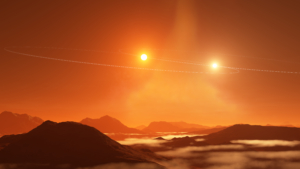
Double Sunset on a ‘Tatooine’ Exoplanet
Artist impression of a double sunset on a ‘Tatooine’ exoplanet forming in a circumbinary disk that is misaligned with the orbits of its binary stars.
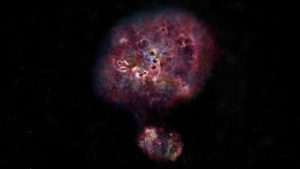
Artist impression of distant, dusty galaxy
Artist impression of what the distant, dusty galaxy called MAMBO-9 would look like in visible light. The galaxy has yet to build most of its stars.
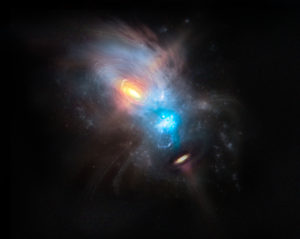
Artist impression of the merging galaxy NGC 6240
Artist impression of the merging galaxy NGC 6240.
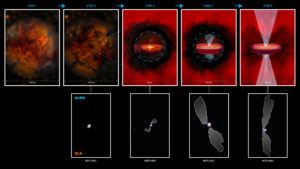
The formation of protostars
This schematic shows a proposed pathway (top row) for the formation of protostars, based on four very young protostars (bottom row) observed by VLA (orange) and ALMA (blue). Step 1 represents the collapsing fragment of gas and dust. In step 2, an opaque region starts to form in the cloud. In step 3, a hydrostatic core starts to form due to an increase in pressure and temperature, surrounded by a disk-like structure and the beginning of an outflow. Step 4 depicts the formation of a class 0 protostar inside the opaque region, that may have a rotationally supported disk and more well-defined outflows. Step 5 is a typical class 0 protostar with outflows that have broken through the envelope (making it optically visible), an actively accreting, rotationally supported disk. In the bottom row, white contours are the protostar outflows as seen with ALMA.
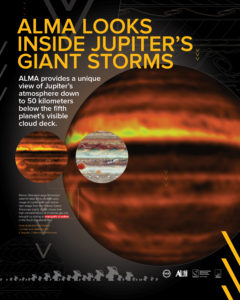
ALMA Peers into the Turbulent Atmosphere of Jupiter
Swirling clouds, big colorful belts of sinking gas, and giant storms. What can radio telescopes detect below the visible clouds of Jupiter? What is causing the many storms and eruptions that we see hovering around the planet? The Atacama Large Millimeter/submillimeter Array (ALMA), observing in radio wavelengths, gives us the first view of Jupiter’s atmosphere down to fifty kilometers below the planet’s three different cloud layers, or decks.





